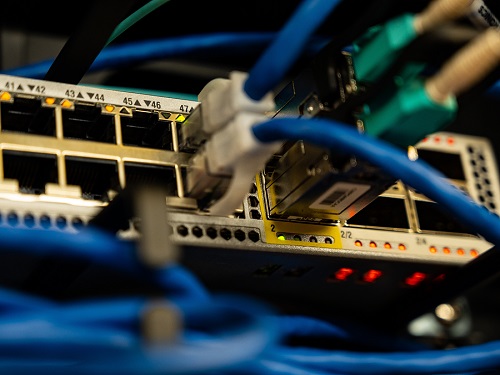Tech Insight – What Is Bandwidth?

In this article we take a look at what bandwidth is, ways to improve bandwidth, and we look at how bandwidth ‘throttling’ is used.
Bandwidth
Bandwidth refers to the maximum amount of data that can be transferred from one point to another over an internet connection in a given period of time. It is typically calculated and expressed in bits per second (bps) or megabits per second (Mbps).
The data that is transferred across the Internet is sent in the form of data ‘packets’, each containing a source and destination, and the content being transferred. Networks with higher bandwidths are able to transfer larger numbers of data packets than connections with lower bandwidths.
Speed
Bandwidth is not the same as speed because while bandwidth refers to the amount of information received per second, speed refers to how fast that information is received or downloaded.
Latency
The latency/delay/ping rate is the time lag that users experience while waiting for something to load (e.g. web pages). Even if plenty of bandwidth is available, reducing latency will improve the speed at which data packets move across the network.
Not all data makes it through to its destination. Taking bandwidth as the maximum that could get through, the ‘throughput’ refers to how much actually makes it to the destination. Some data can be prevented from doing so due to factors such as packet loss caused by errors in transmission or congestion.
Broadband
Internet Service Providers (ISPs) enable users to connect to the Internet at high speed through broadband. This is essentially a wide bandwidth data transmission carrying different types of signals through an infrastructure made of different components along the route (e.g. coaxial cable or optical fibre). Different ISPs offer different broadband speeds but, as previously mentioned, speed is not the same thing as bandwidth.
Ways To Improve Bandwidth
Some of the key ways that you can improve bandwidth are to:
– Upgrade your plan with your ISP to get higher Mbps e.g. to a Fios Gigabit Connection. This may be helpful for those who stream large amounts of content and use many different devices.
– Update/upgrade the router or frequently reboot the router to strengthen the Internet connection.
– Use physical, Ethernet wire connections to the router. This can help to get around problems such as connection issues with other devices.
Throttling
Bandwidth throttling is a way that ISPs intentionally slow down their internet service/slow down the data transmission for reasons including regulating network traffic, saving money, minimising bandwidth congestion, or, as in most cases, due to excess use on a plan that has a data cap. Throttling is not illegal but users should be informed if the ISP is using it.
Avoiding Throttling
One way to avoid throttling is to use a virtual private network (VPN) as ISPs cannot see the encrypted traffic. Users can test whether their service is being throttled, for example, by running two speed tests, one using the normal connection and one using a VPN. If the VPN is much faster, this could indicate that throttling is being used.
What Does This Mean For Your Business?
Businesses, therefore, need to assess how much bandwidth they are likely to need, e.g. by taking into account factors such as how many employees need to be accessing the network and the bandwidth requirements needed for the applications that they use. Other ways to help include getting on the right plan from the ISP, using cables to the router, organising network backups and updates, monitoring and policing the traffic, migrating apps to the cloud, using WAN optimisation tools, and more. For businesses to maximise productivity and continuity, how to maximise their bandwidth is, therefore, an important consideration.
Sponsored
Ready to find out more?
Drop us a line today for a free quote!
